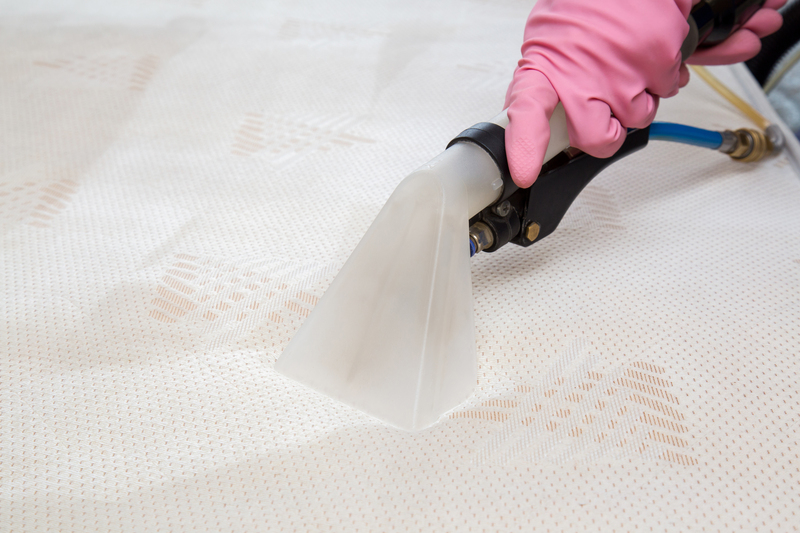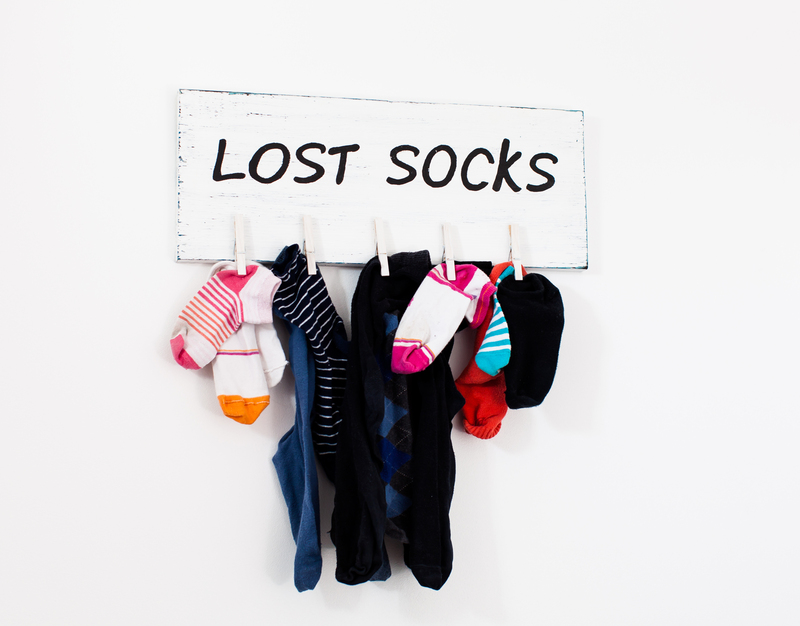Step-by-Step Guide to Effectively Remove Grease Stains Every Time
Posted on 29/10/2025
Grease stains are among the most stubborn laundry and surface messes. Whether it's from food splatters on your shirt, a cooking accident on your kitchen counter, or automotive mishaps on garage floors, grease can be challenging to tackle. Fortunately, understanding the step-by-step process to remove grease stains can make all the difference. In this comprehensive guide, you'll learn proven techniques and expert advice to help you effectively remove grease stains every single time, regardless of the surface.
Why Are Grease Stains So Tough?
Grease stains are a nuisance because grease is a lipid-based substance. Unlike water-based stains, grease doesn't dissolve or lift easily with water alone. These stains tend to seep deep into fabric fibers or the pores of countertops, making them difficult to remove with a simple wipe-down. This is why it's crucial to use the right products and techniques for effectively removing grease stains.

Understanding the Types of Grease Stains
Before diving into detailed removal methods, it helps to recognize the kinds of grease stains you may encounter:
- Food Grease: Common in kitchens, caused by oils, butter, meats, and dressings.
- Automotive Grease: Thicker and heavier, often from car repair or machinery.
- Cosmetic Grease: Lipsticks, lotions, and makeup can leave oily marks on clothes and upholstery.
- Cooking Oil Spills: Vegetable, olive, coconut, or canola oils are frequent offenders.
Pro Tip: Each type of grease stain may require slightly different approaches or products for optimal results.
The Essential Steps to Remove Grease Stains from Clothes
When grease lands on your favorite shirt or jeans, time is of the essence. Act fast for the best chance at lifting the stain. Here's a proven, step-by-step process:
Step 1: Blot -- Don't Rub
- Use a paper towel or clean cloth to gently blot away excess grease.
- Do not rub, as this will push the grease deeper into the fibers and make removal harder.
Step 2: Apply an Absorbent
- Sprinkle baking soda or cornstarch directly onto the stain.
- Let it sit for at least 10-15 minutes to absorb as much grease as possible.
- Shake or brush off the powder.
Step 3: Pre-treat with Dish Soap or Laundry Detergent
- Apply a small amount of dishwashing liquid or liquid laundry detergent directly to the stain.
- Work it in gently using your fingers or a soft-bristled brush.
- Let it sit for 5-10 minutes.
Step 4: Launder with Hot Water
- Check the garment's care label. If safe, use the hottest water recommended for the fabric.
- Launder as usual with laundry detergent.
- Before drying, check if the stain is gone. Heat from the dryer can set any remaining grease.
Step 5: Repeat if Necessary
- If the stain persists, repeat the pre-treating process before drying the item again.
How to Remove Grease Stains From Upholstery and Carpets
Upholstery and carpets demand extra care. Follow these targeted steps to get rid of grease stains from furniture or floor coverings:
Step 1: Blot the Fresh Grease
- Use paper towels or a dry cloth to absorb as much of the grease as you can without rubbing.
Step 2: Use an Absorbent
- Generously sprinkle baking soda, talcum powder, or cornstarch over the stain.
- Let it sit for 15-30 minutes for maximum absorption.
- Vacuum or gently brush away the powder.
Step 3: Spot Clean with a Mild Solution
- Mix a few drops of dishwashing liquid in a bowl of warm water.
- Dip a clean, white cloth into the solution and gently dab the stain (work from outside in to avoid spreading).
- Blot with a dry towel to absorb excess moisture.
Step 4: Rinse with Minimal Water
- Use a damp cloth (just water) to remove any soapy residue.
- Blot dry again.
Step 5: Air Dry
- Let the area air dry completely. Avoid direct heat sources as they can set leftover stains.
Note: For stubborn or old stains, repeat the process or consider professional cleaning.
How to Remove Set-In or Old Grease Stains
Old grease stains can seem impossible, but don't give up. With patience, you can still successfully remove tough grease stains from fabrics and other surfaces. Here's how:
- Apply an absorbent like baking soda and let it rest overnight, then brush off.
- Soak the affected fabric in a mixture of equal parts white vinegar and warm water for 30 minutes.
- Pre-treat with a powerful stain remover or enzyme-based cleaner.
- Wash or blot as recommended above.
Persistence is key: Even for deep-set grease, several rounds of treatment can often work wonders.
How to Remove Grease Stains from Hard Surfaces
Kitchens, counters, garage floors, and appliances frequently collect sticky, unsightly grease. Here's a quick guide to eliminating grease stains from non-porous surfaces:
- Kitchen Counters: Use a mixture of dish soap and warm water, scrubbing with a sponge or cloth. For tougher stains, use a paste of baking soda and water, then rinse thoroughly.
- Stove Tops: Apply a degreasing cleaner and let it sit for a few minutes before wiping clean. Avoid abrasive pads to prevent scratching.
- Garage Floors: Cover the stain with baking soda or cat litter, allow absorption, then scrub with a stiff brush and a grease-cutting detergent. Rinse away with warm water.
- Grills and Ovens: Use specialized oven cleaners following manufacturer instructions for safety and effectiveness.
Preventing Grease Build-Up
- Wipe down surfaces regularly.
- Address spills immediately.
- Use splatter guards while cooking.
DIY and Commercial Products for Grease Stain Removal
Homemade Solutions: When considering how to get grease stains out without harsh chemicals, these items are effective:
- Baking Soda: Lifts and absorbs grease from fabrics and hard surfaces.
- Cornstarch: Effective alternative for fabrics and upholstery.
- White Vinegar: Cuts through greasy residue on glass, tiles, and plastic.
- Lemon Juice: Natural degreaser and deodorizer for light stains.
- Dish Soap: Breaks down grease on almost any surface.
Commercial Options:
- Enzyme-Based Stain Removers: Excellent for organic grease stains.
- Powdered Laundry Boosters: Helpful in laundry pre-soaks for heavy fabric stains.
- Degreasing Sprays: Tailored for kitchen counters, appliances, and grills.
Important Grease Stain Removal Tips
- Always pre-test any cleaning solution in an inconspicuous spot, especially on delicate fabrics or new surfaces.
- Blot, don't spread: Spreading or rubbing can work the grease deeper into the fibers.
- Act quickly: The faster you address a fresh grease spill, the more likely you'll remove it completely.
- Avoid heat until you're sure the stain is gone. High temperatures from dryers or irons can set grease stains permanently.

Frequently Asked Questions (FAQ) About Removing Grease Stains
Q: What's the best household product to use on fresh grease stains?
A: Dish soap is highly effective. Its formula is specifically designed to break up and lift grease.
Q: Can vinegar remove grease stains on clothes?
A: White vinegar helps loosen greasy residues and neutralize odors, but it's best in combination with detergents or as a rinse aid.
Q: How do you get tough grease stains out of delicate fabrics?
A: Try baby powder or cornstarch first, gently brush away, then use a mild detergent suited for the fabric. Avoid harsh scrubbing.
Q: Is it possible to remove grease stains that have already gone through the dryer?
A: While heat can set stains, repeated alternating treatments with absorbents and strong detergents may still lighten or remove even set-in grease stains.
The Final Word on How to Get Rid of Grease Stains Every Time
Grease stains don't have to spell disaster for your clothes, upholstery, or surfaces. By following this comprehensive, step-by-step guide to effectively remove grease stains every time, you'll ensure that even the most stubborn messes can be handled with confidence. Remember:
- Address grease spills as soon as possible.
- Use absorbents like baking soda, cornstarch, or talcum powder.
- Pre-treat with grease-busting detergents or homemade cleaners.
- Launder or rinse with the appropriate water temperature, and always check before drying.
With these expert tips and step-by-step solutions, you can effectively banish grease stains--every single time!
If you found this guide useful, bookmark it or share it with friends and family who want to know the secrets of keeping their life grease-stain-free.







